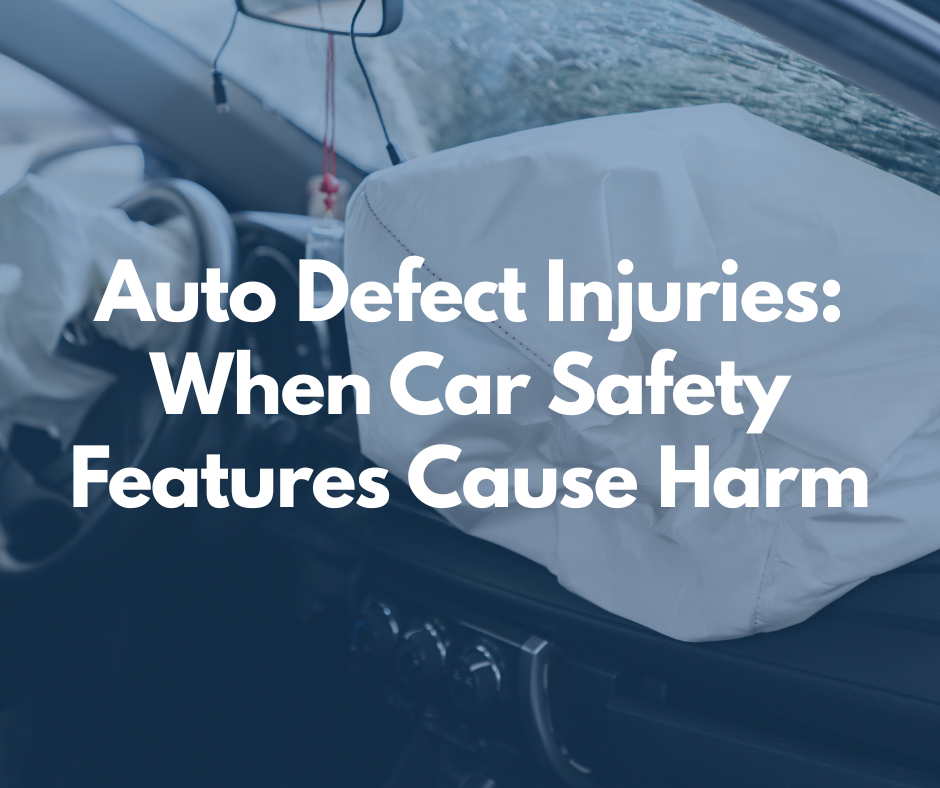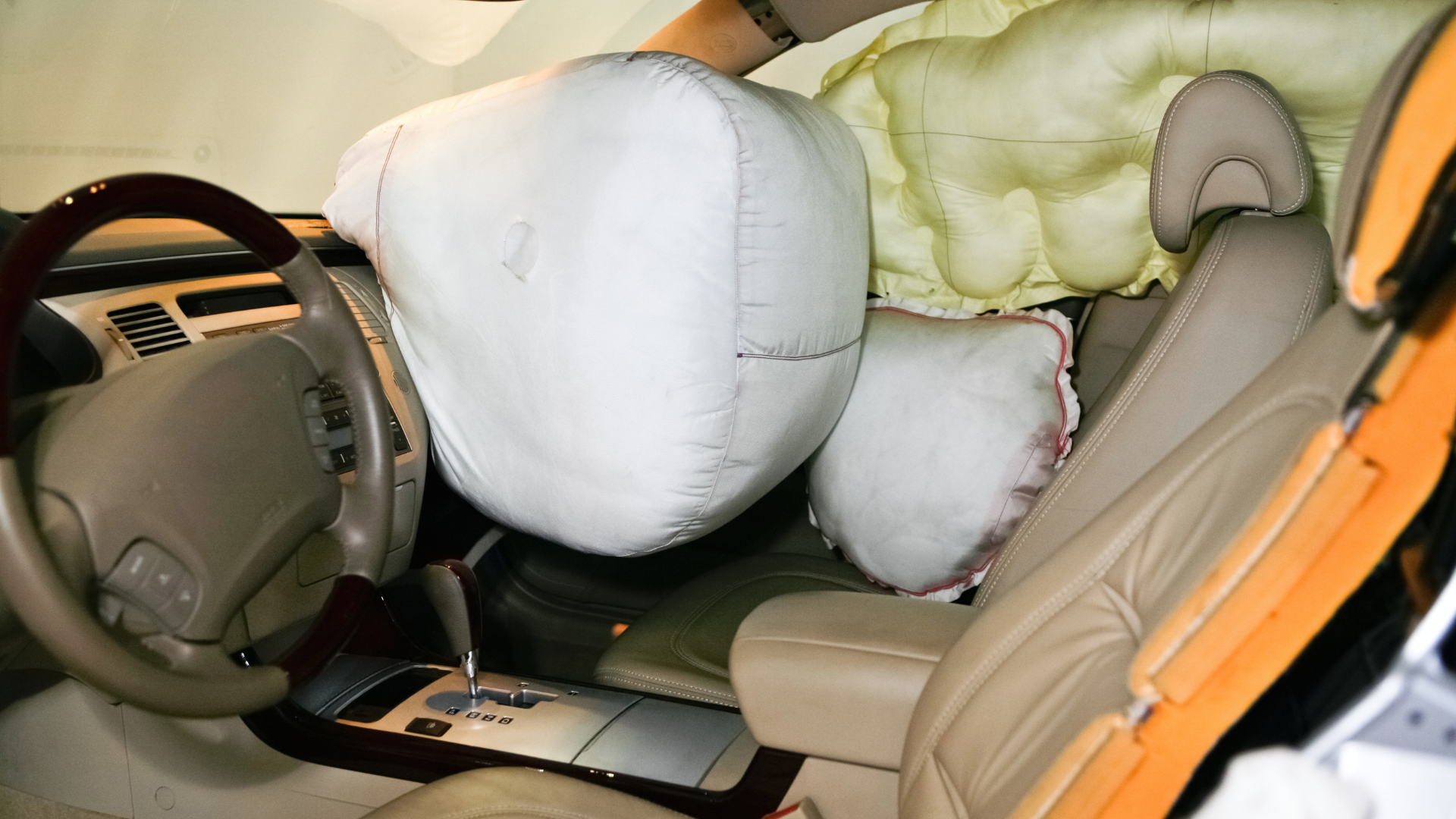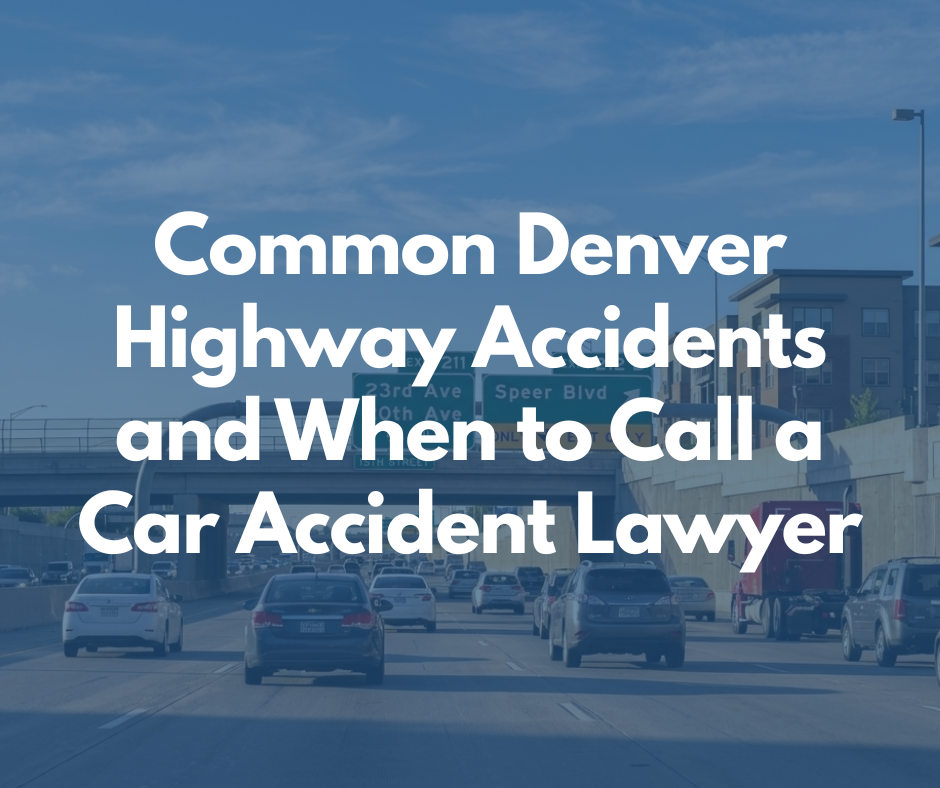
TL;DR
- Modern car safety features can malfunction and cause serious injuries when they're defective or fail to work as designed
- Airbags that deploy improperly, seat belts that don't lock, and automated braking systems that fail can lead to catastrophic injuries
- You may have a product liability claim against the vehicle manufacturer if a defective safety feature caused your injuries
- Auto defect injuries often require expert analysis to prove the feature malfunctioned rather than functioned normally
- Our firm handles product liability cases across Colorado, Washington, Oregon, and Wyoming for victims injured by faulty safety systems
We expect the safety features in our vehicles to protect us during crashes. Airbags, seat belts, anti-lock brakes, and advanced driver assistance systems are supposed to reduce injury severity and save lives. But what happens when these systems fail or malfunction at the worst possible moment?
The truth is that defective safety features can turn a survivable crash into a catastrophic one. We've represented clients across Colorado, Washington, Oregon, and Wyoming who suffered devastating auto defect injuries not because of the crash itself, but because a safety system that should have protected them either failed completely or malfunctioned in a dangerous way. As a products liability lawyer who's won high profile auto defect cases for our clients, I can tell you from first hand experience that these injuries can be life-altering, and the manufacturers who put faulty products on the road need to be held accountable.
When Airbags Become Weapons Instead of Protection

Airbags should deploy within milliseconds of impact, cushioning your head and torso from striking the steering wheel or dashboard. When they work correctly, they're remarkably effective. When they don't, the results can be deadly.
Airbag injuries happen when the system malfunctions in several ways. Some airbags deploy too late, after your body has already struck the steering wheel. Others deploy with excessive force, causing facial fractures, traumatic brain injuries, or even detached retinas. We've seen cases where airbags deployed randomly while someone was driving down the highway, causing them to lose control and crash.
The National Highway Traffic Safety Administration has issued numerous recalls for defective airbag inflators that can explode and send metal shrapnel into vehicle occupants. These defects aren't theoretical. They've killed and injured people across the country, including right here in our service areas.
If your airbag didn't deploy during a collision where it should have, or if it deployed in a way that caused serious injuries beyond what you'd expect from a functioning system, you may have a product liability car accident claim.
Seat Belt Failures That Turn Protection Into Harm
Seat belts are supposed to lock during sudden deceleration, holding your body in place while allowing just enough give to prevent injury. But faulty seat belt systems can fail in multiple ways that result in auto defect injuries.
Some seat belts don't lock at all during a crash, allowing occupants to be thrown forward with full force. Others have faulty retractors that don't keep the belt snug against your body before impact. We've handled cases involving seat belt pretensioners that failed to activate, buckles that released during the crash, and anchor points that tore away from the vehicle frame.

Seat belt injuries from properly functioning belts typically show a diagonal pattern across your chest and lap. But if you were ejected from the vehicle, if the belt came unbuckled, or if you have injuries consistent with being completely unrestrained despite wearing your seat belt, that's a red flag for vehicle safety defects.
The forces involved in crashes are enormous. According to crash data from the Centers for Disease Control and Prevention, motor vehicle crashes are a leading cause of injury-related deaths in the United States. When a seat belt system fails, the difference between walking away and catastrophic injury can happen in milliseconds.
Advanced Safety Technology That Malfunctions
Modern vehicles come equipped with sophisticated electronic safety systems. Automatic Emergency Braking (AEB) is supposed to detect imminent collisions and apply the brakes if you don't react in time. Lane Keeping Assist should gently guide you back into your lane if you drift. Adaptive Cruise Control maintains a safe following distance automatically.
These systems rely on cameras, radar, and complex software. When they work, they can prevent accidents. When they malfunction, they can cause them.
We're seeing more cases involving malfunctioning advanced safety systems. AEB systems that activate without warning on clear highways, causing rear-end collisions. Lane Keeping Assist that overcorrects and steers vehicles into adjacent lanes or off the road. Adaptive Cruise Control that fails to slow down when approaching stopped traffic.
If you or a loved one was injured in a car accident, call us at 866-377-3800 or schedule a free consultation at www.metierlaw.com.
These aren't user errors. These are engineering failures that put drivers and passengers at risk despite following every rule of the road. When these systems cause crashes or make collisions worse, the resulting auto defect injuries can support claims against manufacturers.
Roof Crush and Structural Failures
Vehicle roofs are designed to withstand rollover crashes and protect occupants from being crushed. Federal safety standards require roofs to support a specific amount of weight before collapsing. But some manufacturers cut corners or use inadequate materials, leading to roof structures that fail during rollovers.
When a roof collapses during a rollover, occupants can suffer severe spinal cord injuries, traumatic brain injuries, or death. According to the Insurance Institute for Highway Safety, roof strength is a critical factor in rollover crash outcomes. State transportation departments across Colorado, Washington, Oregon, and Wyoming regularly document rollover crashes where structural failures contributed to injury severity.
If you or someone you love suffered a spinal cord injury, paralysis, or traumatic brain injury during a rollover crash where the roof caved in significantly, this may indicate car manufacturer liability for inadequate structural design.
Proving Your Case Against a Manufacturer
Product liability cases involving auto defect injuries require different legal strategies than typical car accident claims. You're not suing another driver for negligence. You're taking on a major corporation that designed, manufactured, and sold a defective product.
These cases require expert witnesses who can examine the vehicle, review crash data, and testify that the safety feature malfunctioned. We work with automotive engineers, accident reconstructionists, and safety experts who can prove that a defect existed and directly caused your injuries.
Manufacturers have teams of lawyers whose job is to deny these claims. They'll argue the safety feature worked as designed, that you used it improperly, or that your injuries came from the crash itself rather than the defect. This is why you need experienced legal representation from the start.
FAQ: Auto Defect Injuries and Product Liability
How do I know if my injuries were caused by a defective safety feature or just the crash itself?
This requires expert analysis of the vehicle and crash circumstances. Warning signs include safety features that didn't activate when they should have, activated when they shouldn't have, or caused injuries inconsistent with a properly functioning system. Our team works with automotive experts who can investigate and determine if a defect existed.
Can I still file a claim if the other driver was at fault for the accident?
Yes. You may have two separate claims: one against the at-fault driver for causing the accident, and another against the vehicle manufacturer for the defective safety feature that made your injuries worse. These are independent legal claims with different defendants.
How long do I have to file a product liability claim for auto defect injuries?
Product liability claims have statutes of limitations that vary by state. In Colorado, Washington, Oregon, and Wyoming, you generally have two to three years from the date of injury, but there are exceptions. You should consult with an attorney as soon as possible to protect your rights.
What compensation can I recover in a product liability case?
You can recover medical expenses, lost wages, future medical care, pain and suffering, and in cases of particularly reckless conduct by the manufacturer, punitive damages. Product liability cases often result in substantial compensation because manufacturers have deep pockets and insurance coverage specifically for these claims.
Do I need the actual vehicle to prove my case?
Preserving the vehicle is critical evidence in product liability claims. The safety systems need to be inspected by experts before repairs are made. If possible, do not allow the vehicle to be repaired or destroyed until you've spoken with an attorney. Cases involving auto defect injuries depend heavily on physical evidence from the vehicle itself.
Your Rights Against Negligent Manufacturers
Vehicle manufacturers make billions of dollars selling cars with promises of advanced safety features. When those features are defective and cause injuries, they need to be held accountable. We've been fighting for injury victims for nearly three decades, and we understand how to build strong product liability cases against major automotive companies.
If you suspect that a malfunctioning safety feature contributed to your injuries, don't wait. Evidence can disappear quickly, and manufacturers will start building their defense immediately. The sooner we can investigate your case, examine the vehicle, and preserve critical evidence, the stronger your claim will be.
Call Metier Law Firm at 866-377-3800 or schedule your free consultation today at www.metierlaw.com.
Disclaimer: Past results discussed should not be considered a guarantee of your results as the factors of every case are individually unique. This content is for informational purposes only and does not constitute legal advice. Consult a qualified attorney from Metier Law Firm regarding your individual situation for legal advice.
Tell Us About Your Case – Free Case Review with a Personal Injury Lawyer
(866) 377-3800Our Locations
.webp)
Do I have a Case?
How Much Should I Be Offered?
Do I Need an Attorney?
If these questions have crossed your mind, let us help. You may need a little direction or may not need an attorney at all, but you deserve to be confident knowing your options. We can provide you with information about our Attorneys of the West® accident investigations and legal services. Your confidential consultation with us is totally free.
Keep up with us!

.svg)



